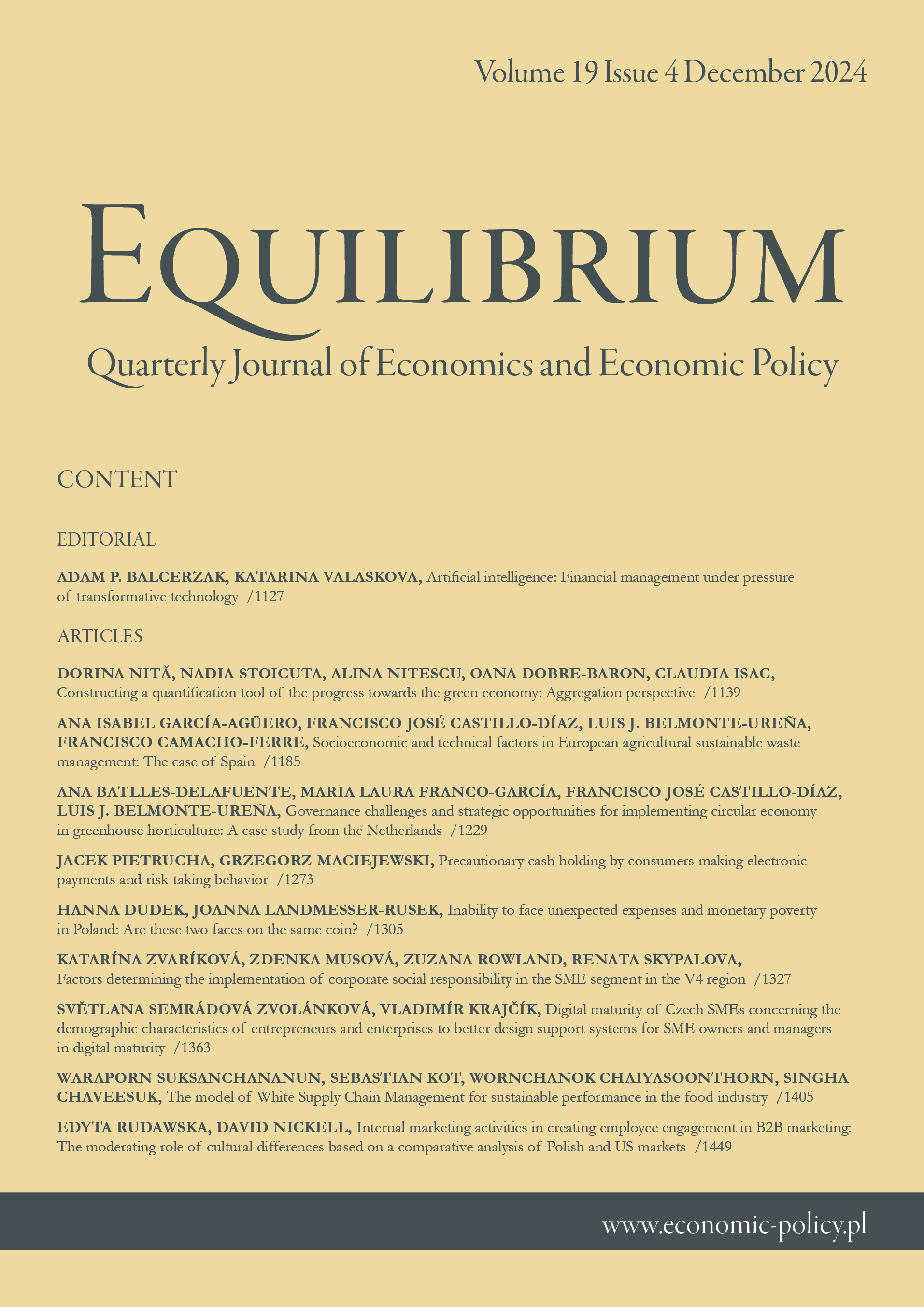Inability to face unexpected expenses and monetary poverty
in Poland: Are these two faces on the same coin?
Inability to face unexpected expenses and monetary poverty
in Poland: Are these two faces on the same coin?
Author(s): Hanna Dudek, Joanna Landmesser-RusekSubject(s): National Economy, Socio-Economic Research
Published by: Instytut Badań Gospodarczych
Keywords: financial distress; monetary poverty; household; Shapley-Owen decomposition; logit model;
Summary/Abstract: Research background: The economic literature often states that monetary poverty does notcoincide with other types of poverty. The paper examines monetary poverty and financialdistress, which refer to distinct aspects of poverty. It addresses the issue by explaining howthe same household characteristics affect these different types of poverty.Purpose of the article: The paper aims to identify socioeconomic variables influencing finan-cial distress and monetary poverty in Poland. In addition, the relative contribution of house-hold-level variables in explaining McFadden’s R2 for the financial dimensions under consid-eration is assessed.Methods: The study relies on data from the EU Statistics on Income and Living Conditions(EU-SILC) survey in 2022. Logistic regression analysis empirically tests the impact of socioeconomic variables on financial distress and income poverty. Moreover, the relative importanceof regressors is determined using the Shapley-Owen decomposition analysis.Findings & value added: The results have revealed that the smallest group consisted of onlymonetary poor households, followed by both monetary poor and financially distressed. Thelargest group was made up of households that experienced only financial distress. Such anincomplete overlap in experiencing the examined types of poverty implies the importance ofstudying financial distress alongside traditional income indicator. The study indicated a statis-tically significant role for characteristics such as disability, unemployment, education, theburden of the repayment of debts, household type, and tenure status in experiencing all thetypes of poverty considered. Furthermore, it was observed that the explanatory power of themodels varied depending on the types of poverty under consideration. The results also re-vealed a substantial relative contribution of education to McFadden’s R2 in all models, indi-cating that education level substantially explains vulnerability to financial fragility. The con-tribution of other regressors varied among the models describing the types of poverty ana-lyzed. These findings should stimulate policymakers, as effective policies are needed to allevi-ate different types of poverty.
Journal: Equilibrium. Quarterly Journal of Economics and Economic Policy
- Issue Year: 19/2024
- Issue No: 4
- Page Range: 1305-1325
- Page Count: 21
- Language: English

